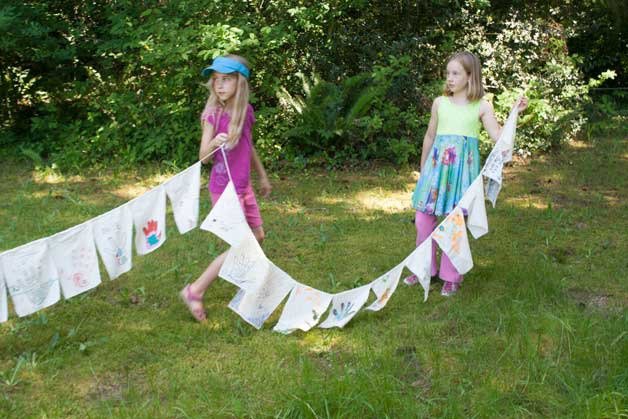What does peace look like?
At Montessori Country School, it comes in the setting of a grassy area surrounded by towering trees. It’s a quiet area, where the hum of nature extends a warm invite for students to sit on a bench tucked into a serene environment. Once students are seated, a tall, wooden “Voyager Peace Pole” hovers above them as a reminder of grace, patience and tolerance.
It’s where they come to make their peace.
“The Peace Pole is where kids can go to do self reflection or to resolve conflicts,” Meghan Skotheim, head of Montessori Country School, explained. “It’s a reminder to all of us of patience [and] caring [behaviors].”
Thirteen years ago, a couple whose child attended the school donated a large piece of wood from a fallen tree on their property. The idea for a Peace Pole was born and welcomed by all on campus, Skotheim said. For many students, it is a place of healing, gratitude and self-awareness. Recess fights often end in resolutions after students in a tiff sit together and leave their misunderstandings at the pole.
When the pole fell last year due to rot, students and staff agreed that it felt as though a piece of their elementary campus wasn’t complete. For a whole year, the pole was missing from its prominent spot.
Just last week, the pole — refurbished and looking brand-new again — was rededicated on the campus at a celebration attended by parents, students and staff. Students in first through fifth grades gathered in front of their parents to present the new pole.
Skotheim offered an introduction of the importance of peace education.
“Educating for peace is an integral part of a Montessori education as important as grammar, multiplication and the area of a triangle,” Skotheim told the group.
Students unveiled “peace flags” as a backdrop behind the pole. Older students kicked off the ceremony with an informational bit — announcing the word peace in various languages — before concluding with a song accompanied by a guitar instrumental.
Fifth-grader Jack Tinker, 11, said having the pole back in place is a big deal to him.
“It’s kind of like a tradition of our school,” he said, noting that it was in place when he came to school in first grade. “That was kind of a shock to everyone [when it fell]. It’s kind of nice to have it back up.”
During the brief performance, parents stood in the tall grass, snapping photos and smiling at their children. After, parents met with their kids in another grassy area to relax and eat shortcake on picnic blankets and tables under the warmth of a sunny day.
The pole site is not the only place where peaceful resolutions are practiced, Skotheim said. Throughout the year, students work with a curriculum woven with peace education throughout. The Peace Pole area is a physical place where conflicts can be resolved or stresses can be released.
“If it serves any purpose, I hope that it reinforces that peace is something we need to work on every day,” Skotheim said.
For fourth-grader Piper Grossberg, the Peace Pole area may just be her favorite place on campus. She said it is a reminder for students every day to be peaceful and stop for a minute to take life in.
“The Peace Pole is like singing, ‘no more war, peace please,’” said Piper, who is 10. “The Peace Pole is pretty much a symbol of peace.”
Piper said the news of the pole being replaced made her “so happy” and she’s ready to enjoy it once again.
The fourth-grader said she’s often visited the area in the past to keep her level whenever she is “stressed or annoyed” by school, friends or something else.
When she leaves the area, she said those feelings of discontent are usually gone.
“I just feel relaxed and refreshed. It’s like a new start,” Piper said. “I can’t believe we finally put it back up. For a little while, I thought we wouldn’t put it back up. But here we are. It’s so exciting. Now I hope it really doesn’t fall again.”



